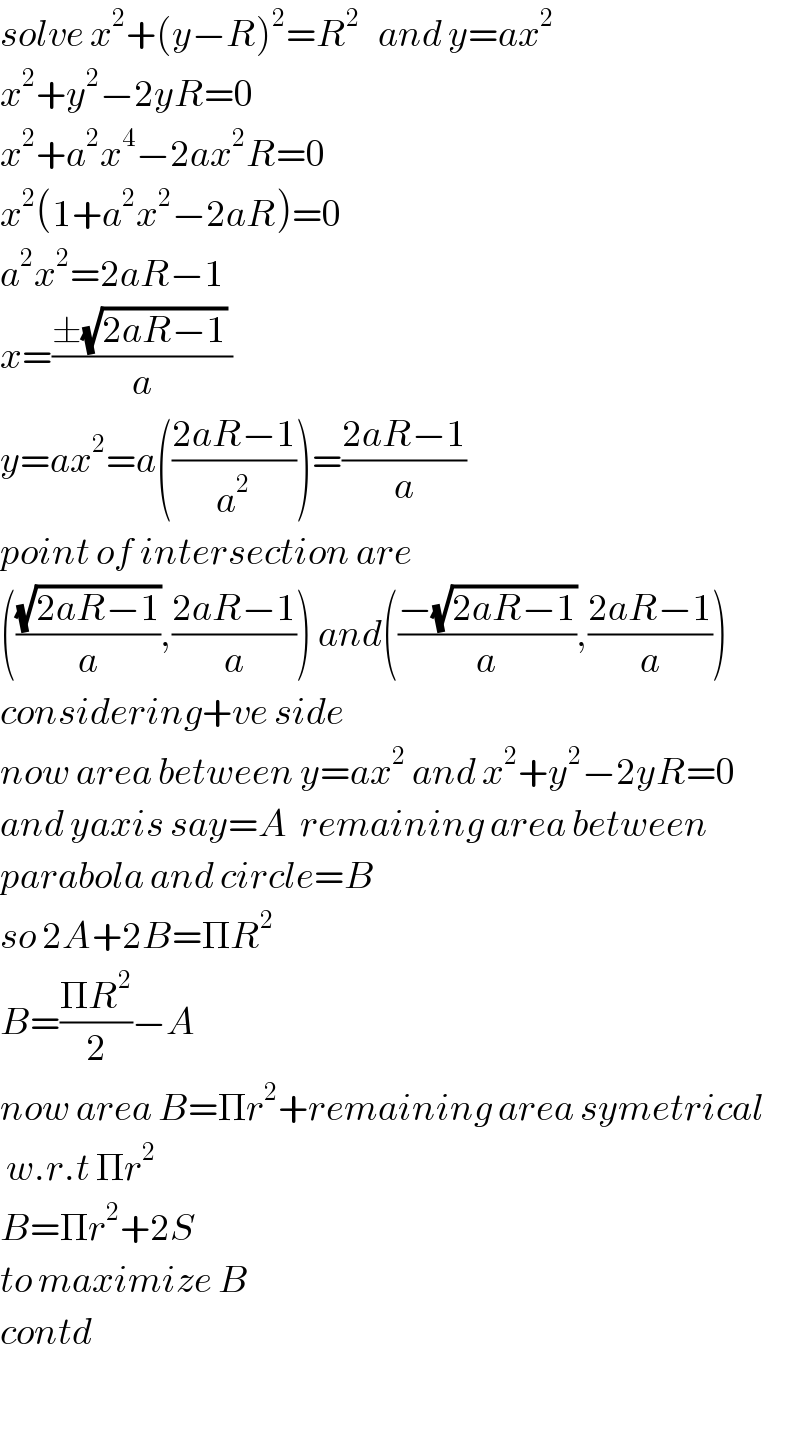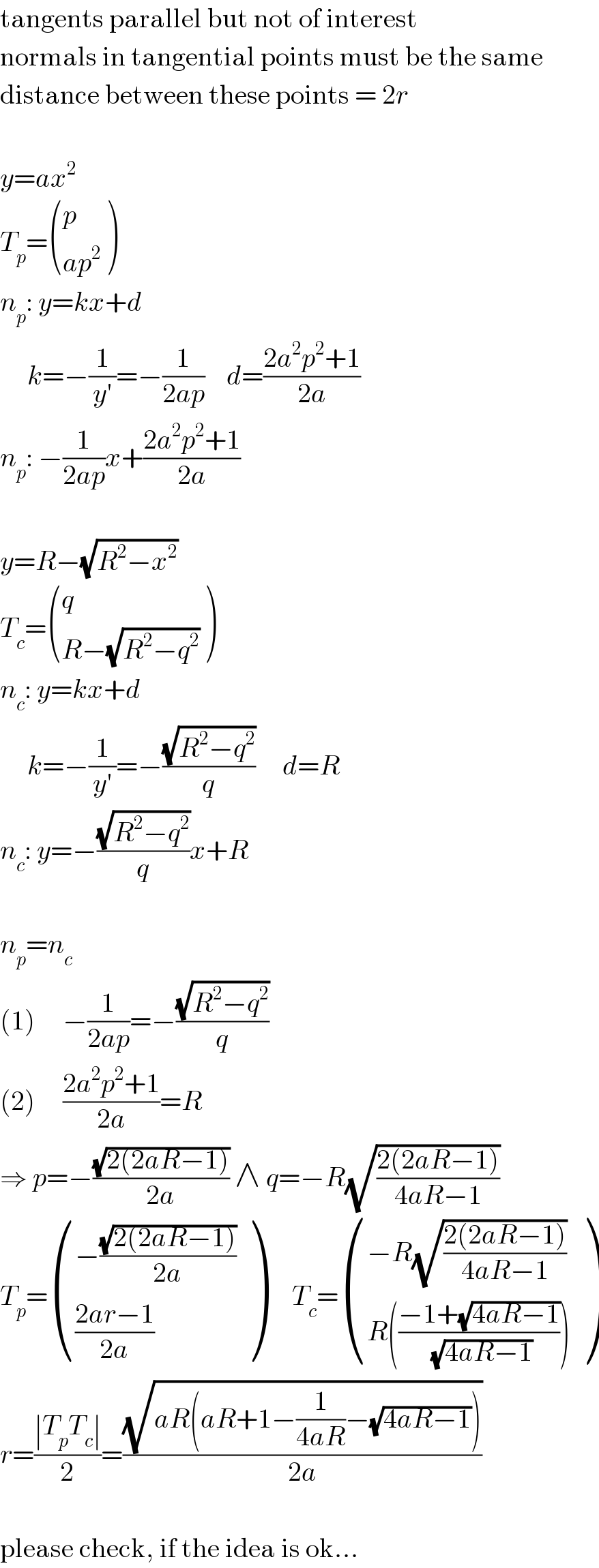
Question and Answers Forum
Question Number 42446 by ajfour last updated on 25/Aug/18

Commented by ajfour last updated on 26/Aug/18

Answered by tanmay.chaudhury50@gmail.com last updated on 26/Aug/18

Answered by MJS last updated on 27/Aug/18

Commented by ajfour last updated on 27/Aug/18

Commented by MJS last updated on 27/Aug/18

